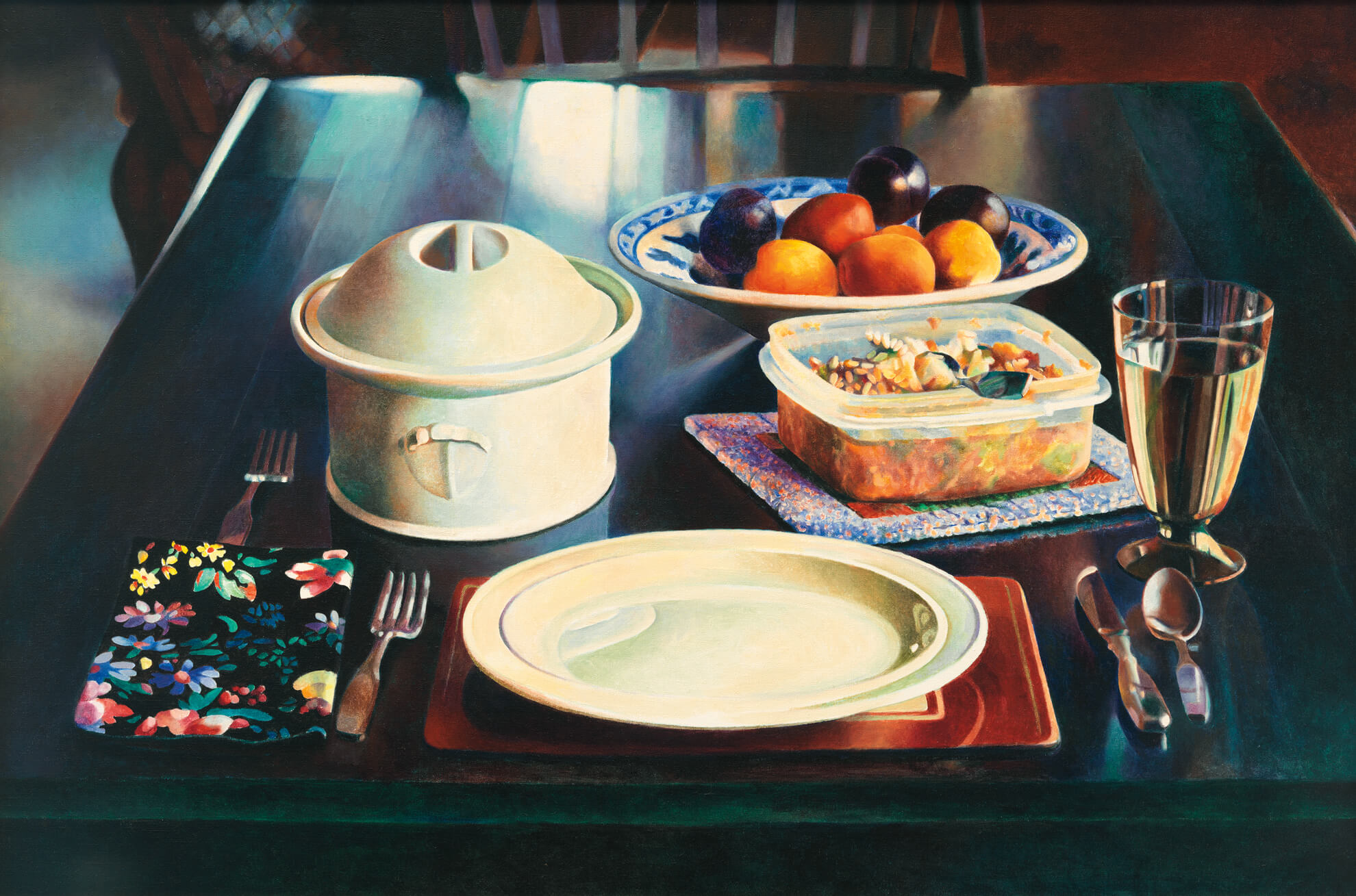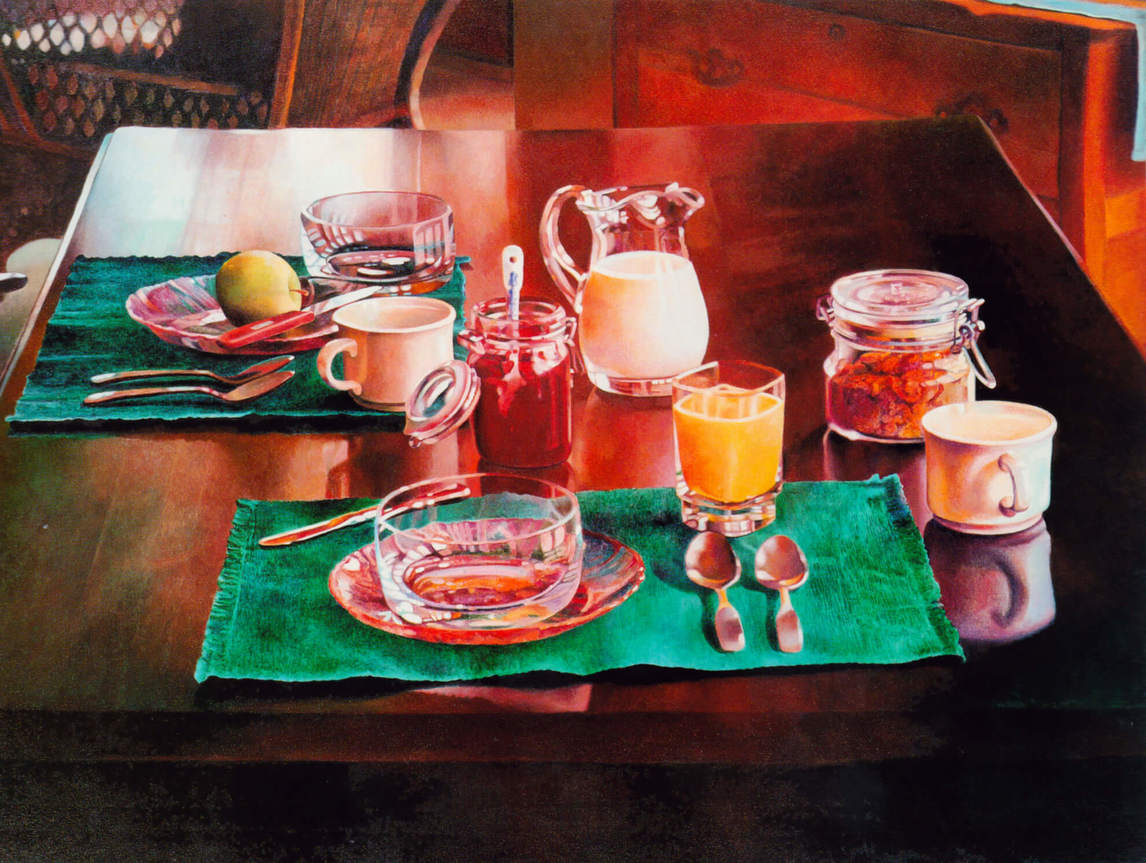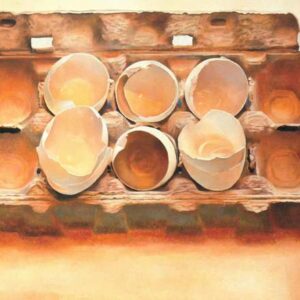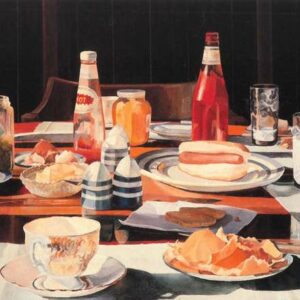Dinner for One 1994

Mary Pratt, Dinner for One, 1994
Oil on canvas, 61 x 91.4 cm
Private collection
“Living alone has made the work stronger,” Mary Pratt said in 1994. This work, Dinner for One, is an example of Pratt’s use of the domestic image to make direct commentary on her own life, rather than on the more general domestic life shared by so many. Yet, as is so often the case in Pratt’s work, the more personal she gets, the more universal the work feels.
This painting must be understood in terms of Pratt’s foundational work Supper Table, 1969. Both are part of a long still-life tradition, stretching back through Western art history, in which an everyday scene is elevated, filled with meaning. In Supper Table, the mostly happy chaos of a life with children is depicted in all its disarray: the satisfaction and tiredness of a brief moment of peace before life’s whirl starts again.

Here, we are instead presented with a quiet, ordered life that seems as if it will always be this way. A modest dinner is laid out neatly on a polished wooden table: a small white plate, pasta salad in a Tupperware container, a single-serve white-china casserole dish, and a bowl of mixed fruit. The plate sits tidily on a mat, beside cutlery and a cloth napkin. The water glass is filled with a pale, golden liquid—wine perhaps, or juice. One suspects that the blue-patterned china bowl of fruit is a fixture of the table, rather than having been added specifically for this meal.
For decades Pratt’s painting had depicted the domestic life of a family, charting the way it changed with time. Supper Table depicts a full house, one emptying by the 1980s as the Pratt children grew up and moved out to pursue their own lives. A companion piece to Dinner for One is Breakfast Last Summer, 1994, a view of another table set for a meal, this time for two. It would have been laid out just before the Pratts separated, and Mary’s decision to paint both scenes in 1994 has a certain diaristic quality. As Pratt often said of her work, “I see something, I’ve got to have it, I’ve got to keep it, I’ve got to paint it. And then, when I start to paint, I realize why.”

 About the Author
About the Author
 More Online Art Books
More Online Art Books
 Acknowledgements
Acknowledgements